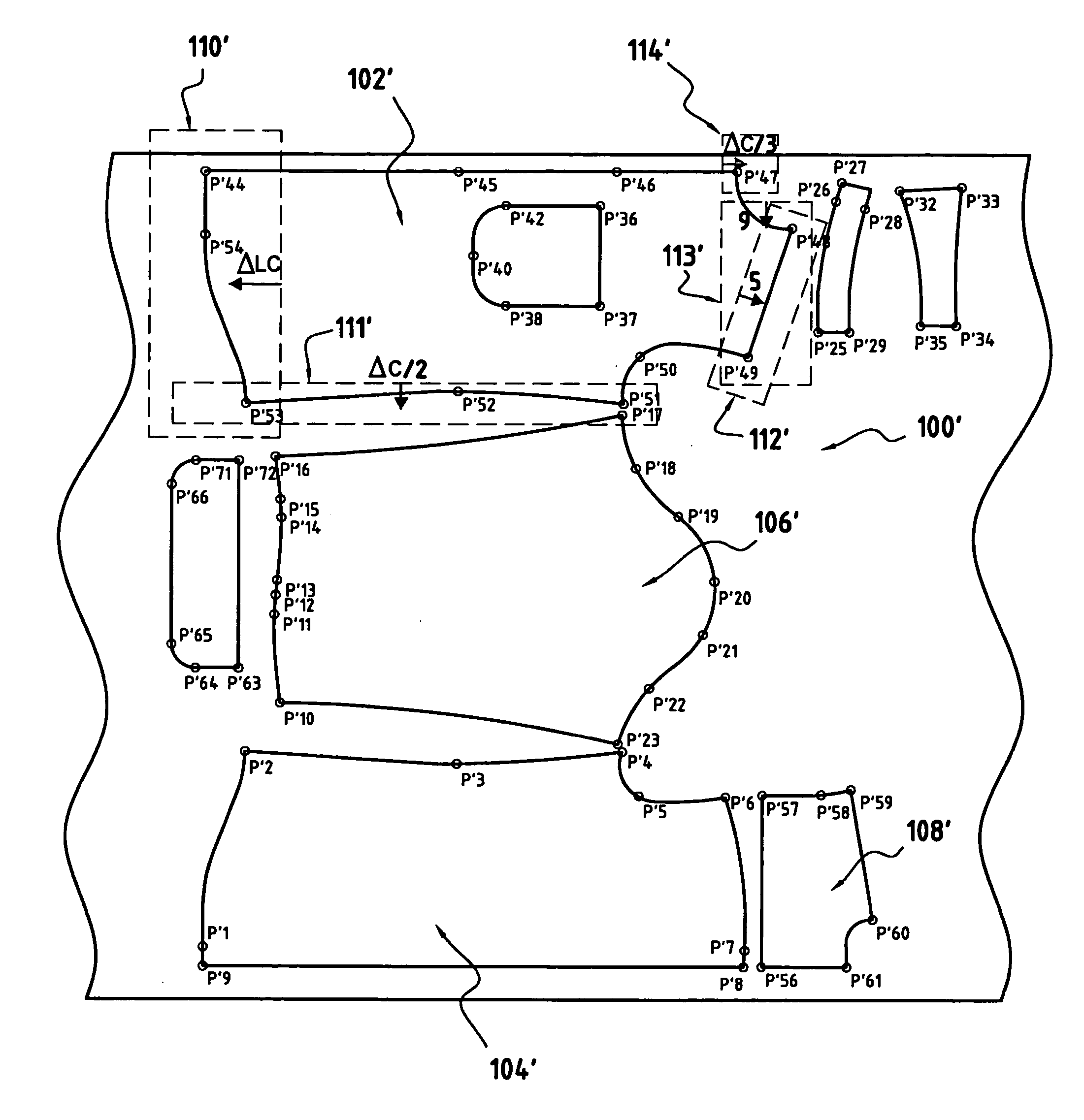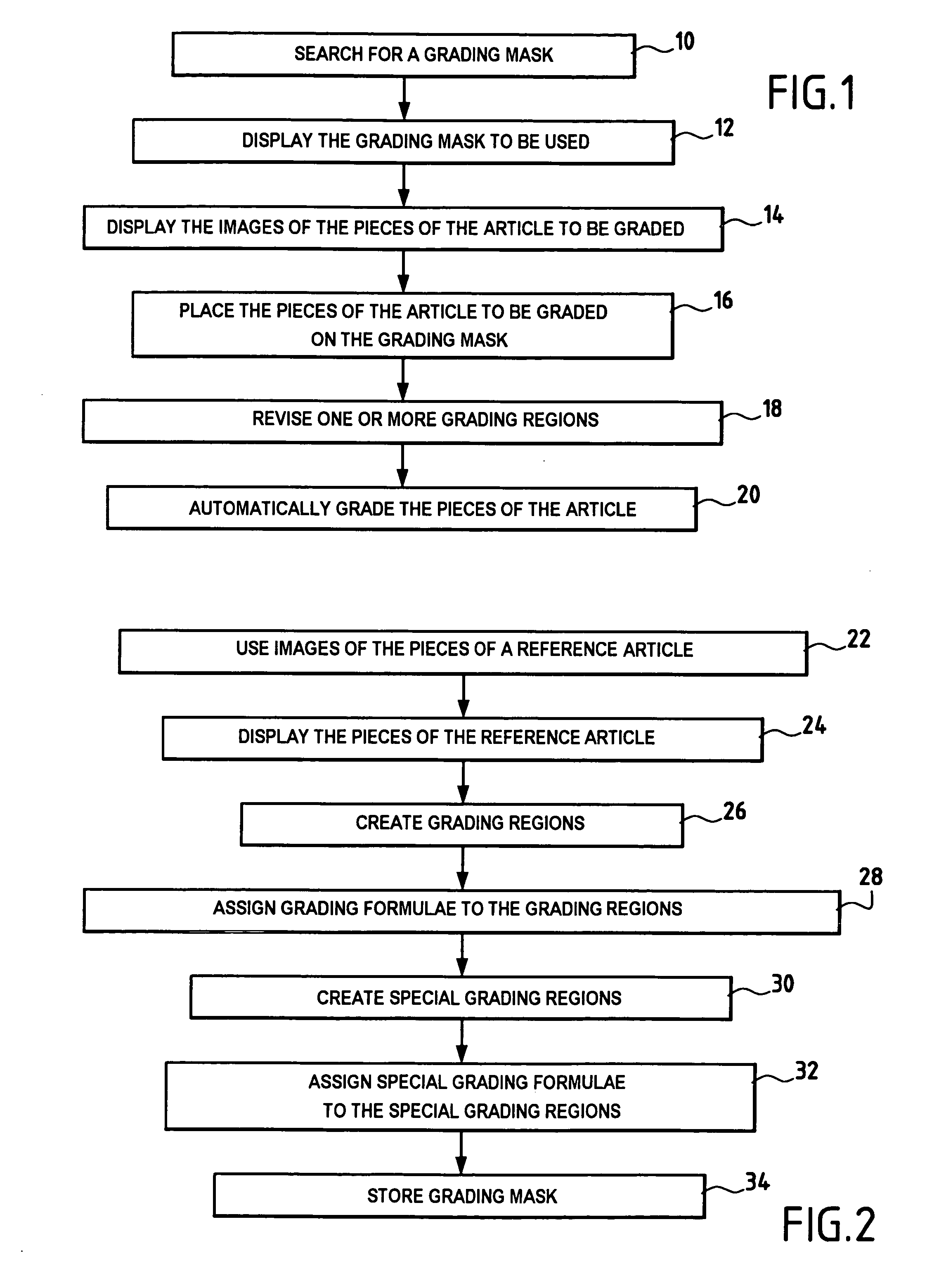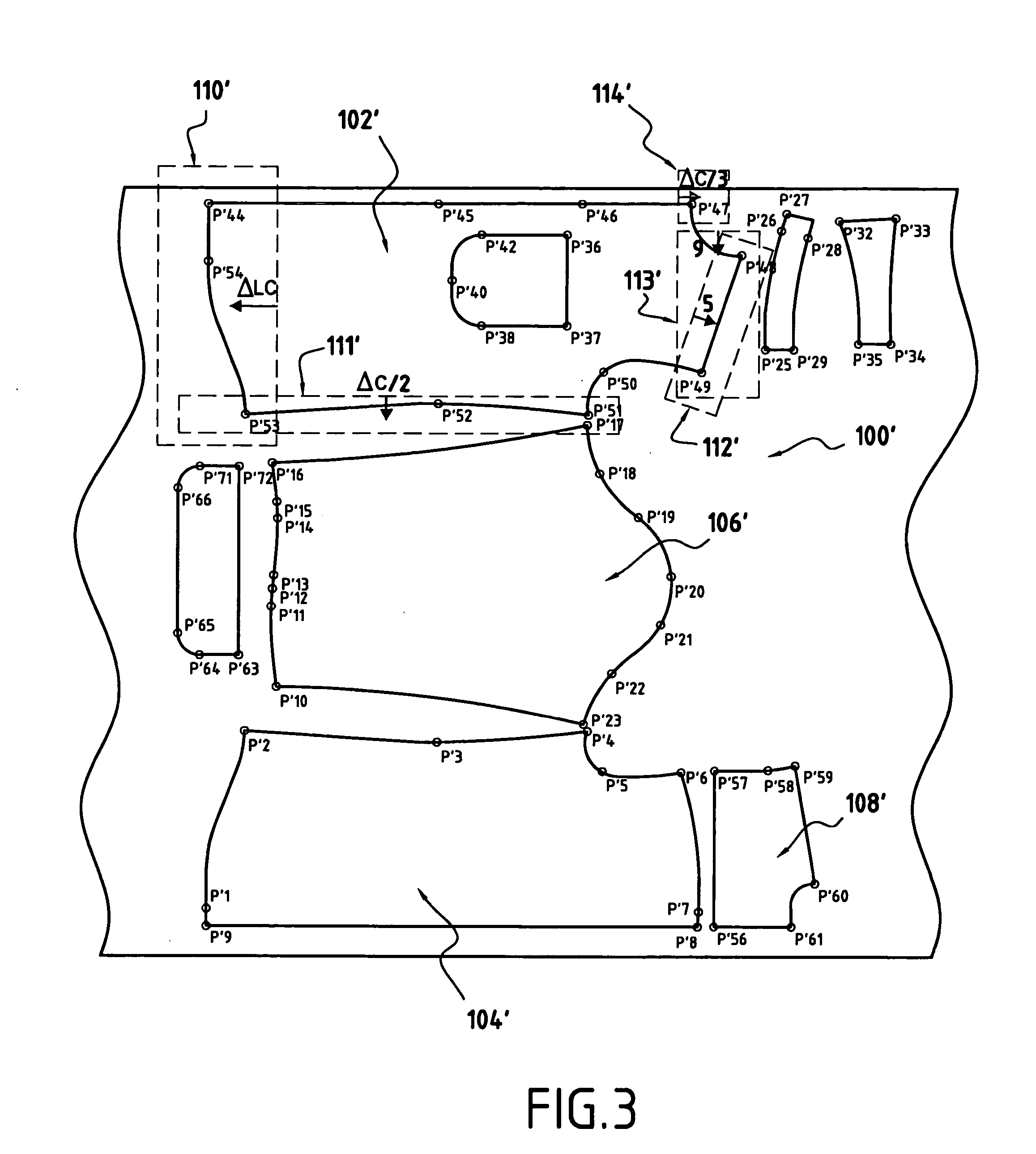Method of automatically grading articles, in particular, garments
a technology of automatic grading and article, applied in the field of method of grading an article, to achieve the effect of simple us
- Summary
- Abstract
- Description
- Claims
- Application Information
AI Technical Summary
Benefits of technology
Problems solved by technology
Method used
Image
Examples
Embodiment Construction
[0024] In the following description, consideration is given to grading the pieces of a garment. However, the invention is also applicable to grading pieces of articles other than garments, e.g. shoes or other footwear, which are also made in different sizes that are to correspond to a base model.
Grading Method
[0025] Reference is made firstly to FIG. 1 which shows the steps in a particular implementation of a grading method of the invention.
[0026] In general, the grading method of the invention can be implemented by means of a computer system equipped, in particular with a graphics workstation and with grading software. The graphics workstation can be of the same type as computer-aided design (CAD) software for designing garments.
[0027] In a first step (10) of the method, the operator searches for and uses a grading mask having images of the pieces of a reference garment of the same type as the garment to be graded for a given base size.
[0028] The grading mask, whose creation m...
PUM
 Login to View More
Login to View More Abstract
Description
Claims
Application Information
 Login to View More
Login to View More - R&D
- Intellectual Property
- Life Sciences
- Materials
- Tech Scout
- Unparalleled Data Quality
- Higher Quality Content
- 60% Fewer Hallucinations
Browse by: Latest US Patents, China's latest patents, Technical Efficacy Thesaurus, Application Domain, Technology Topic, Popular Technical Reports.
© 2025 PatSnap. All rights reserved.Legal|Privacy policy|Modern Slavery Act Transparency Statement|Sitemap|About US| Contact US: help@patsnap.com



